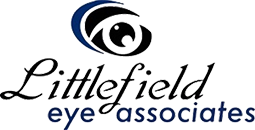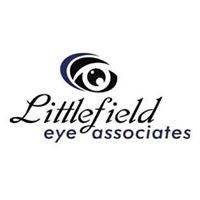Astigmatism is a common vision condition that touches many lives, yet misconceptions about its nature and management remain widespread. For example, many people wonder if it’s possible to cure astigmatism.
Astigmatism cannot be cured or reversed, but it can be corrected with glasses, contact lenses, and laser eye surgery.
Many people have a small amount of astigmatism—this is very common. Through an eye exam, an eye doctor can determine if you have astigmatism and offer management options that work for you.
What Is Astigmatism?
Astigmatism arises from an irregular curvature of the eye’s cornea or lens. This irregularity prevents light from focusing correctly on the retina, resulting in blurred or distorted vision at every distance.
The exact cause of astigmatism is not fully understood, but genetics and external factors like eye injuries or surgeries are believed to play a role. It often accompanies other vision issues, such as myopia (nearsightedness) or hyperopia (farsightedness).
What Are the Symptoms of Astigmatism?
The symptoms of astigmatism may include:
- Blurred vision
- Headaches
- Eye strain
- Difficulty driving at night
Recognizing these signs can be the first step toward managing the condition effectively.
If you are experiencing any of these symptoms, it is vital to consult an eye care professional for a comprehensive eye exam. We can help identify the severity and type of astigmatism present in your eyes.
Other Effects on Vision
Beyond causing blurriness and distortions, astigmatism can also lead to symptoms like eye strain, headaches, and difficulty focusing on objects at various distances.
People with astigmatism may experience issues with light sensitivity, particularly when driving at night, impacting their ability to see clearly in low-light conditions or when exposed to bright lights.
Types of Astigmatism
There are 3 common types of astigmatism: regular, irregular, and mixed.
Regular astigmatism occurs when the curvature of the cornea (the clear front surface of the eye) is uneven in 1 direction. This creates 2 different focal points that cause blurred vision.
Irregular astigmatism, on the other hand, refers to more complex variations in the curvature of the cornea or lens. This leads to multiple focal points and distorted vision that can be more difficult to correct with glasses or contact lenses. Irregular astigmatism can be caused by eye conditions such as keratoconus or scarring from an injury.
Mixed astigmatism combines elements of both regular and irregular astigmatism, presenting challenges in achieving clear vision due to the combination of different focal points across the eye. This type may require specialized treatments tailored to address the unique characteristics of both regular and irregular astigmatism.
How Is Astigmatism Corrected?
Astigmatism is a treatable condition, but it cannot be completely cured or reversed. Various solutions have been developed to help people with astigmatism see clearly.
While some may refer to these solutions as cures, they most often correct rather than eliminate the condition. Genetics and the natural aging process can also influence the progression of astigmatism, necessitating ongoing management rather than a one-time cure.
There are multiple approaches to correcting astigmatism, ranging from simple corrective lenses to laser eye surgery:
- Corrective lenses: Glasses and contact lenses are 2 of the most common options for correcting astigmatism. They can compensate for the irregular shape of the cornea or lens, thus sharpening vision.
- Laser eye surgery: Procedures like LASIK and PRK can use a laser to reshape the cornea, improving the eye’s ability to focus light correctly.
- Scleral lenses: Scleral lenses are rigid gas-permeable lenses that sit over the cornea and rest on the sclera, the white part of your eye. If you can’t wear regular contact lenses but don’t want to wear glasses, scleral lenses are a great option. Dr. Yates at Littlefield Eye Associates is one of the few optometrists in Kansas City with a Fellow of Scleral Lens Society (FSLS) designation.
Emerging technologies are continuously improving the range of options available for astigmatism treatment, enhancing the options available for you and your family.
Caring for Eyes with Astigmatism
Providing the proper care for your eyes can go a long way in supporting your eye health and vision when you have astigmatism. Here are a few tips to follow:
- Get regular eye exams: Have your eyes checked regularly as recommended by an eye care professional.
- Use proper contact lens care: Follow instructions from your eye doctor for the care and replacement of contact lenses.
- Avoid eye strain: Take steps to manage and reduce your time spent on activities that strain your eyes, and use adequate lighting when performing visual tasks.
Support for Seeing Clearly
While astigmatism may not have a cure, it’s certainly a manageable condition. With the right treatment plan, people with astigmatism can enjoy improved vision. It’s crucial to seek professional advice for personalized care and make sure that regular eye examinations are a part of your routine.
Remember, taking proactive steps toward maintaining your eye health is your best defense against the challenges posed by astigmatism. At Littlefield Eye Associates, we are here for you every step of the way. Book an appointment with us today to see the many ways we can help you see clearly when you have astigmatism.





